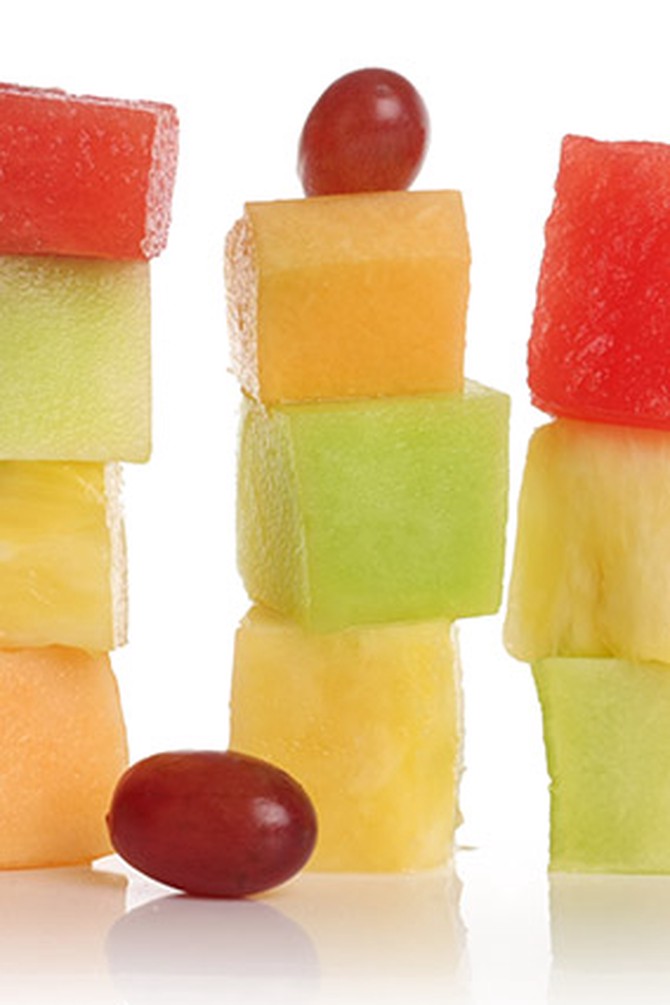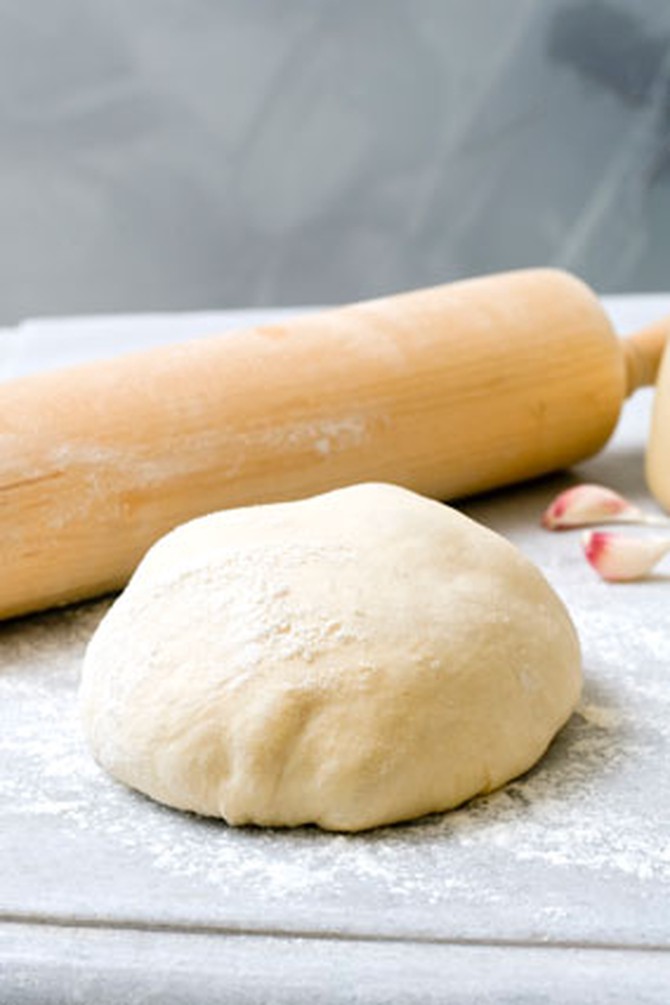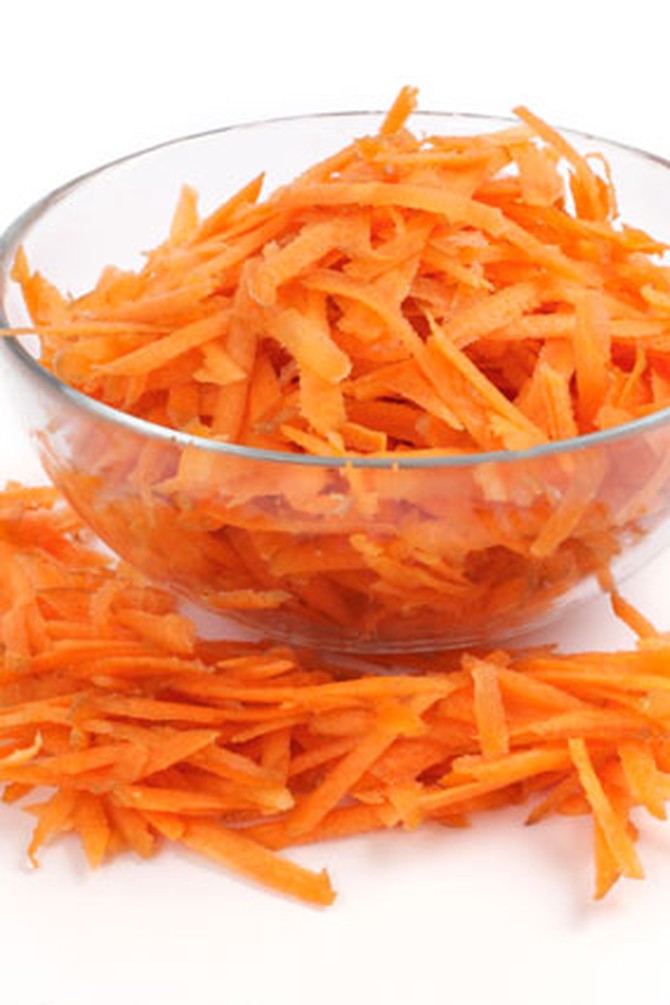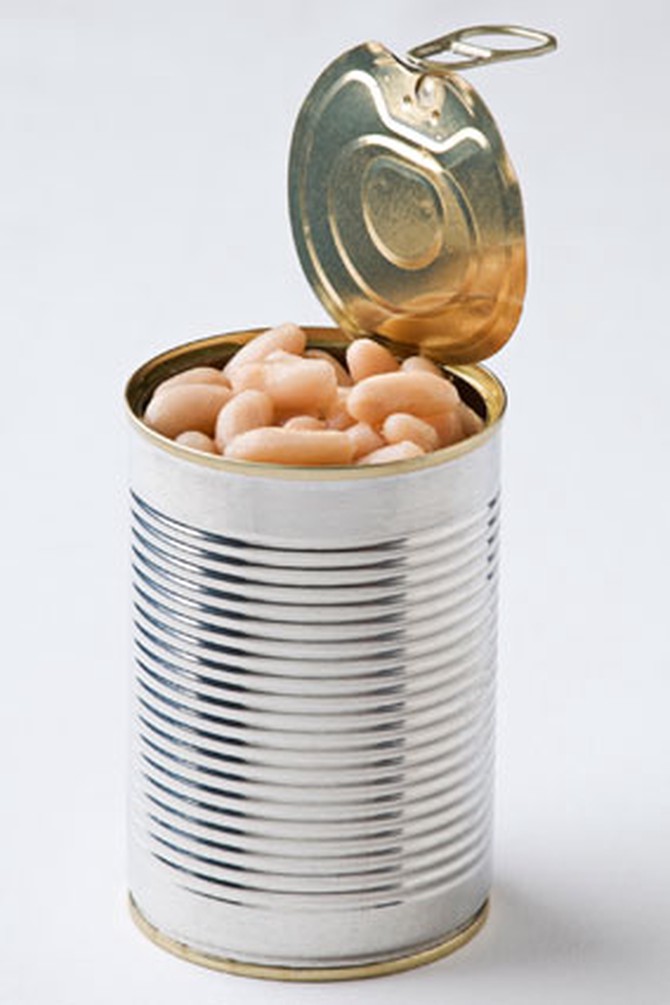Store-Bought Shortcuts: What's Worth It, What's Not
Find out which ingredients will help your meals, from prepeeled garlic to instant mashed potatoes.
By Lynn Andriani

Photo: Thinkstock
Guacamole
Worth it. Making this chips-and-salsa accompaniment from scratch is easy, but smooth, creamy, good-for-you avocados can be pricey (as much as $2.50 each). Plus, it's often hard to find perfectly ripe ones at the store, so if tonight is Mexican night, it's probably too late to make your own. That's why Liz Weiss, co-author of No Whine with Dinner and co-creator of MealMakeoverMoms.com, loves buying pre-made pouches of the dip. Wholly Guacamole sells two 7-ounce packages for $5.49, which, depending on the current price of avocados, can be a steal. The company uses high-pressure processing to extend the product's shelf-life—and it also just started selling 100-calorie individual packs.

Photo: Thinkstock
Fresh Cubed Fruit
Not worth it. You probably know it's cheaper to buy an entire mango, melon or pineapple and cut it up yourself than it is to pick up a handy plastic container of already-chopped fruit. But you may not realize the savings: An 8-ounce, $3.49 container of pineapple chunks, for instance, winds up costing twice as much per ounce as a $4.99 whole pineapple (44 cents per ounce versus 21 cents per ounce). Some stores also carry cored pineapples, which, while pricier per ounce than whole pineapples, still wind up costing less than chunks. (Though Weiss concedes that if you can afford the packages and they're the only way you'll eat fruit, you should go for it.)

Photo: Thinkstock
Frozen Corn
Worth it. While the freezer's arctic chill can destroy some vegetables (Brussels sprouts, carrots, asparagus, we're looking at you), others hold up amazingly well. Corn is one of them—which is especially helpful, considering this summer veggie may only be in season for two short months, depending on where you live. Thawed corn isn't as crunchy as fresh, but it's just as sweet, and it defrosts much more quickly than a big block of iced broccoli. Whole Foods now carries organic bicolor, fire-roasted, yellow and white varieties that are perfect for soup, chowder and salsa.

Photo: Thinkstock
Refrigerated Pizza Dough
Worth it. If you don't have an Italian deli or pizzeria nearby that sells homemade dough, most supermarkets—as well as specialty stores like Trader Joe's and Whole Foods—carry plain and sometimes whole wheat varieties (though they may be frozen, not refrigerated, and will take several hours to thaw at room temperature). Weiss prefers brands with short ingredient lists over the mass-produced versions you'll find near the slice-and-bake cookies. One more thing: Check the expiration date, since old dough will be dryer and harder to work with. Weiss likes to defrost frozen chopped spinach, mix it with Parmesan, light cream cheese and shredded, part-skim mozzarella; spread it over the dough and bake it. You can also turn the dough into garlic cheese sticks or empanadas—or cinnamon rolls for breakfast.

Photo: Thinkstock
Instant Mashed Potatoes
Worth it. True, experienced chefs might turn their noses up at this cooked, mashed and dehydrated side dish in a box. Even if you'd never stop making mashed potatoes just like your mom did, there are other reasons to keep instant versions in your cupboard. If you're baking potato bread, you'll need at least a cup of mashed spuds, and insta-ones will work fine. The flakes are also an excellent meatball filler and soup thickener. And if you plan ahead and buy potatoes to mash yourself but then learn that four more people are coming to dinner, you can add the flakes to your homemade version to bulk it up.

Photo: Thinkstock
Prepeeled Garlic
Not worth it. Often sold in pint-size containers, the cloves may taste fine the first time you use them (and they'll certainly come in handy if you're making a dish that requires, say, an entire head of garlic). Unfortunately, though, if you use only one or two cloves and then come back a week or so later to grab more, you'll find they've deteriorated into tasteless bulbs. Peeling one or two for dinner isn't difficult: Either whack them on a cutting board with a wooden spoon or the flat part of a chef's knife, use an E-Z-Rol peeler, or try this two-bowl technique, which supposedly yields an entire peeled head of garlic in less than 10 seconds.

Photo: Thinkstock
Presliced Mushrooms
Worth it. It's not that pulling the stems off a cup or two of mushrooms and cutting them into 1/4-inch slices is such a chore, but if 10 minutes really matters to you (and whole mushrooms aren't significantly cheaper), go for these pre-prepped vegetables, which are perfect in omelets or on pizza. Again, though, look at the expiration date (and use your judgment too); since they're cut, they will start to wilt more quickly. Squeeze the package and feel if they're still firm.

Photo: Thinkstock
Shredded Carrots
Not worth it (for cooking). The julienned carrots you'll find in a bag in the produce aisle may be perfect for baking a carrot cake. But if you're planning to use the vegetables in a cooked dish—whether mixed into meatballs or sautéed with ground beef or pork for tacos or a stir-fry—the pieces will be too long. Most savory dishes require smaller pieces, so you're better off shredding your own with a box grater. Weiss promises it takes her less than a minute to shred one carrot.

Photo: Thinkstock
Canned Beans
Worth it. We all know how much cheaper it is to buy dried beans and cook them ourselves, but since a can of beans is still relatively cheap as far as proteins go, many of us—including Katie Goodman, who writes the blog GoodLife Eats, Etc.—rely on them for quick weeknight meals. A few caveats, though: They can be high in sodium, so drain and rinse the beans before adding them to your dish (some brands—such as Goya and Westbrae—now offer low-sodium versions of black, kidney and pinto beans, as well as chickpeas). And BPA exists in the lining of canned foods, so if you're concerned, consider buying them in boxes.

Photo: Thinkstock
Boxed or Canned Stock
Worth it. The day after Thanksgiving, you should absolutely use the carcass to make homemade turkey stock. The same rule applies to days when you roast a chicken. Aside from those instances, though, store-bought stock tastes good and will save you hours in the kitchen. It's true that many are sky-high in sodium and also contain MSG, so read the labels and choose low-sodium varieties. Weiss also looks for a short ingredient list that includes (for chicken stock) water, chicken, onion, celery and carrots. Freeze any leftovers.

Photo: Thinkstock
Presifted Flour
Not worth it. Regardless of which side of the sifting-versus-not-sifting debate you're on (here's one pastry chef who says the practice isn't worth the trouble), presifted flour won't save you any time. Since the product compacts during shipping and handling, you'll still need to aerate it once you start baking.

Photo: Thinkstock
Cookie and Cake Mixes
Worth it. We're willing to bet that pretty much anyone who has ever had to hold down a full-time job and bring cookies to a bake sale, birthday party or office gathering has passed off treats made from a boxed mix as "from scratch." (Not that we're speaking from personal experience...ahem.) But it's when you look at mixes as jumping-off points for creative desserts—or even healthier versions of the sweets you love—that you can really start fooling people. Weiss is a fan of Trader Joe's Truffle Brownie mix—but her spin is to leave out the stick of butter and replace it with 1/4 cup canola oil and 1/2 cup pureed pumpkin, which makes it taste rich without tons of extra fat or calories. Or try Bakerella's Red Velvet Cake Pops recipe, which might be the cutest use of a boxed mix we've ever seen.
Keep Reading: The 13 fastest dinners on the planet
Keep Reading: The 13 fastest dinners on the planet
Published 02/22/2012

